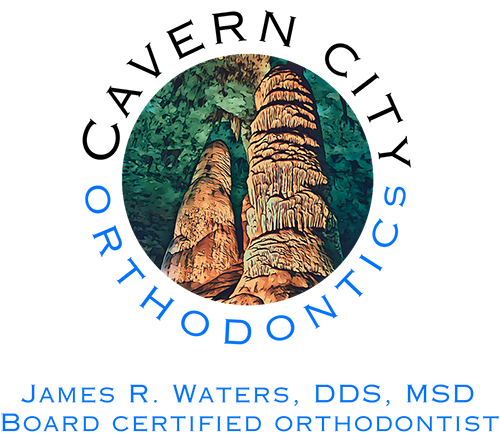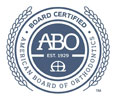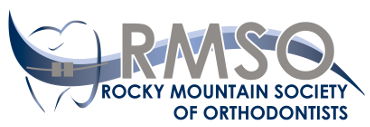Traction Therapy
Some children present with a recessed upper jaw and pronounced lower jaw (also known as an underbite). The development of the upper jaw is controlled by muscle forces acting on the bone as well as genetics and function of the air spaces. It also is affected by tongue activity and breathing patterns. Constriction of the upper jaw during growth leads to a smaller jaw arch and ultimately less room for the permanent teeth (i.e., severe crowding). This “maxillary deficiency” also creates a crossbite where the lower teeth fit outside of the upper teeth instead of the other way around. This crossbite leads to interference in the bite during chewing and biting and can cause significant joint problems including pain and excessive wear to the bones and teeth.
In these patients, lower jaw growth will continue to grow forward during pre-adolescence while the upper jaw does not. This creates a worsening underbite where the lower front teeth bite down in front of the upper front teeth. The severity increases up to age 14 to 15.
To correct this problem, the upper jaw is expanded by pushing the left and right halves of the maxillary bones apart and allowing bone to form in the midline where the bones separate (see expansion). This corrects the width of the upper jaw but also “frees” the upper jaw to allow forward movement. Therefore, this allows us to pull the two pieces of the upper jaw forward with traction headgear, correcting the front to back relationship between the upper and lower jaws. Once this active movement is complete, the patient’s growth is monitored and/or enhanced to hold the correction to a mild discrepancy until the patient’s growth subsides to an adult base-level. Keep in mind that this corrects the upper jaw only. Unfortunately, the lower jaw will continue to grow and braces will be required at a later date to finish the overall correction. Most of these cases, if they go untreated as described, will require surgery to correct.
Once growth is complete, all of the bones of the face fuse and we are no longer able to move them or enhance growth without first breaking the bones apart and fixing them in new positions. Most likely surgery, if required, will be on the upper and lower jaws together.

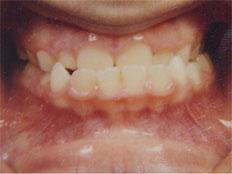
This patient presents at age seven with a classic mid-face deficiency. Notice the “punched-in” profile with a sunken nose and cheek bones. Also note the underbite with the lower front teeth in front of the upper front teeth.
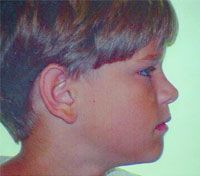
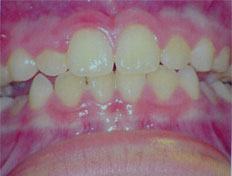
Now after traction and expansion, compare the middle of this patient’s face and cheek bones to the beginning picture. Also, the dental underbite is now corrected.
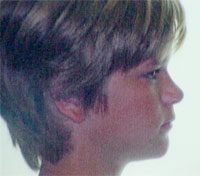
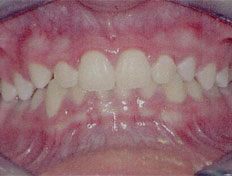
Finally, at age 13 years and 9 months, growth has stabilized and the bite has settled into good occlusion. At this point, any final crowding or mal-alignment can be corrected with braces.
